Owning a dog brings immense joy and companionship into our lives, but it also comes with responsibilities. One crucial aspect of being a pet parent is understanding your dog’s bathroom needs. Have you ever wondered, “How often does my dog need potty breaks?” Let’s delve into this question and uncover the key factors that determine your furry friend’s potty schedule.
Contents Overview
Preliminary Summary
Dog potty breaks are essential for maintaining a happy and healthy furry friend. Just like us, dogs need regular bathroom breaks to relieve themselves and stay comfortable. These breaks are not only about answering nature’s call but also provide opportunities for exercise, mental stimulation, and bonding with their owners. Establishing a consistent potty routine is key to preventing accidents indoors and promoting good habits. By understanding your dog’s cues and needs, as well as providing positive reinforcement, you can make potty breaks a positive experience for both you and your canine companion. So, whether it’s a quick trip outside or a leisurely walk, remember that each potty break is a chance to strengthen the bond with your pup while ensuring their well-being.
Understanding Your Dog's Bladder Capacity
Dogs, like humans, have varying bladder capacities based on factors such as age, breed, size, and overall health. Puppies and senior dogs typically have smaller bladders and may need more frequent bathroom breaks compared to adult dogs.
Factors Affecting Potty Break Frequency
Age:
Puppies have smaller bladders and higher metabolism, requiring more frequent potty breaks.
Adult dogs generally have better bladder control and can hold it in for longer periods.
Breed:
Small breeds typically have smaller bladders and may need more frequent bathroom breaks.
Larger breeds may have larger bladders and can hold it in for longer stretches.
Diet:
A dog’s diet directly impacts their bowel movements and urinary habits.
High-fiber diets can lead to more frequent bowel movements, while excessive protein intake can increase urine output.
Water Intake:
Dogs who consume more water will need to urinate more frequently.
Monitoring your dog’s water intake and adjusting it accordingly can help regulate their bathroom breaks.
Activity Level:
Active dogs tend to have faster metabolisms, leading to more frequent bathroom breaks.
Sedentary dogs may hold it in for longer periods, especially during rest or sleep.
Health Conditions:
Underlying health issues such as urinary tract infections or gastrointestinal disorders can affect your dog’s bathroom habits.
Keep an eye out for any changes in urination frequency or consistency of stool, as these could indicate health concerns.
Stress and Anxiety:
Dogs may need to relieve themselves more often when they’re stressed or anxious.
Changes in routine, new environments, or separation anxiety can all contribute to increased potty breaks.
Training and Routine:
Dogs thrive on routine, so establishing a consistent bathroom schedule during training can help regulate their potty breaks.
Reinforcing good bathroom habits through positive reinforcement can also influence their behavior.
General Guidelines for Potty Break Frequency
While there’s no one-size-fits-all answer to how often your dog needs to go outside, here are some general guidelines based on age:
- Puppies (8-12 weeks old): Every 1-2 hours, or immediately after eating, drinking, sleeping, or playing.
- Adult Dogs (1-7 years old): Every 4-6 hours, or as needed based on individual factors.
- Senior Dogs (7+ years old): Every 4-6 hours, with additional breaks if mobility or health issues are present.
Signs Your Dog Needs to Go Out for a Potty Break
Dogs communicate their needs in various ways, and one crucial aspect of pet ownership is understanding when your furry friend needs a bathroom break. Recognizing these signs is vital for maintaining their health and your home’s cleanliness. Let’s delve into the indicators that your dog needs to go out for a potty break.
- Restlessness and Pacing:
- Dogs may exhibit restless behavior, such as pacing or circling when they need to relieve themselves.
- Restlessness often accompanies the urge to go to the bathroom, signaling that your dog is feeling uncomfortable and needs to go out.
- Sniffing and Scratching at the Door:
- If your dog is sniffing around the floor or scratching at the door, they may be indicating their need to go outside.
- Dogs have a keen sense of smell, and they may pick up scents indicating it’s time for a bathroom break.
- Whining or Barking:
- Whining or barking maybe your dog’s way of vocalizing their urgency to go out.
- Pay attention to the tone and intensity of their vocalizations, as they can provide clues about the level of urgency.
- Sudden Changes in Behavior:
- Abrupt changes in your dog’s behavior, such as becoming unusually quiet or hyperactive, could indicate their need to relieve themselves.
- Watch for deviations from your dog’s typical demeanor, as they may be trying to communicate their need for a bathroom break.
- Sniffing Ground or Circling:
- Dogs often sniff the ground or circle a specific area when they need to go potty.
- This behavior is instinctual and serves as a way for dogs to find a suitable spot to relieve themselves.
- Restlessness After Eating or Drinking:
- After meals or drinking water, dogs may become restless as their digestive system kicks into gear.
- Keep an eye out for signs of discomfort or restlessness following meal times, as this may indicate your dog needs to go out.
- Squatting or Posturing:
- If your dog suddenly squats or exhibits a posture indicating they’re about to relieve themselves, it’s crucial to act quickly.
- Promptly take them outside to their designated potty area to prevent accidents indoors.
- Pawing at You:
- Some dogs may paw at their owners as a way of signaling their need to go outside.
- Pay attention to your dog’s attempts to communicate with you, as they may be trying to convey their need for a bathroom break.
Tips for Establishing a Potty Routine
Consistency is Key:
Stick to a consistent schedule for feeding and potty breaks.
Take your dog out to relieve themselves first thing in the morning, after meals, before bedtime, and at regular intervals throughout the day.
Designated Potty Area:
Choose a specific spot in your yard or nearby outdoor area where you want your dog to do their business.
Consistently take them to this spot to reinforce the association between the location and potty time.
Positive Reinforcement:
Praise and reward your dog with treats or verbal praise immediately after they successfully eliminated in the designated area.
Positive reinforcement strengthens the desired behavior and encourages your dog to continue using the designated spot.
Establish a Pre-Potty Routine:
Before heading outside, establish a pre-potty routine such as using a specific command like “Go potty” or “Do your business.”
This signals to your dog that it’s time to focus on eliminating, making the process more efficient.
Monitor Water Intake:
Keep track of your dog’s water intake, especially before bedtime, to minimize late-night bathroom trips.
Limiting water intake a couple of hours before bedtime can help reduce the likelihood of accidents during the night.
Supervision and Management:
Keep a close eye on your dog, especially during the initial stages of establishing the routine.
Supervision allows you to catch accidents in the act and redirect your dog to the designated potty area.
Be Patient and Persistent:
Rome wasn’t built in a day, and neither is a solid potty routine.
Be patient with your dog and remain consistent in your efforts. Consistency and persistence will pay off in the long run.
Bottom Line
Understanding your dog’s potty needs is essential for maintaining a happy and healthy relationship with your furry companion. By considering factors such as age, breed, and health, you can establish a suitable potty routine that meets your dog’s needs. Remember, patience, consistency, and positive reinforcement are the keys to successful housebreaking. So, the next time you ask yourself, “How often does my dog need potty breaks?” you’ll be armed with the knowledge to keep your pup content and accident-free.
Key Takeaways
- Varied Bladder Capacities: Understand that dogs have different bladder capacities influenced by factors like age, breed, size, and health status.
- Age Matters: Puppies and senior dogs typically need more frequent bathroom breaks due to their limited bladder control.
- Consider Size and Breed: Smaller breeds and certain breeds with higher metabolisms may require more frequent potty breaks.
- Health Conditions: Keep an eye out for signs of health issues like urinary tract infections, which can increase the urgency to urinate.
- Diet and Hydration: Ensure your dog receives a balanced diet and enough water, as these factors can impact bathroom habits.
- General Guidelines:
- Puppies (8-12 weeks old): Every 1-2 hours, or after eating, drinking, sleeping, or playing.
- Adult Dogs (1-7 years old): Every 4-6 hours, or as needed based on individual factors.
- Senior Dogs (7+ years old): Every 4-6 hours, with additional breaks if mobility or health issues are present.
- Watch for Signs: Learn to recognize your dog’s cues indicating they need to go outside, such as whining, pacing, or circling.
- Establish a Routine: Consistency is crucial in housebreaking. Stick to a regular schedule for feeding, water breaks, and potty outings.
- Positive Reinforcement: Reward your dog with praise or treats when they eliminate outside to reinforce good behavior.
- Monitor Water Intake: Control your dog’s water intake, especially before bedtime, to reduce the likelihood of accidents overnight.
- Supervise Closely: Keep a close eye on your dog’s behavior and anticipate when they may need to go out.
- Seek Professional Help if Needed: If your dog struggles with housebreaking, consider consulting a veterinarian or professional dog trainer for assistance.
Understanding and addressing your dog’s potty needs is essential for fostering a harmonious relationship and ensuring their well-being. With patience, consistency, and proper training, you can establish a routine that meets your furry friend’s needs while minimizing accidents in the house.

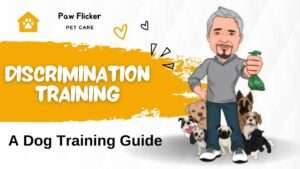
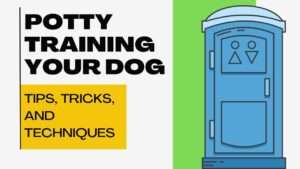

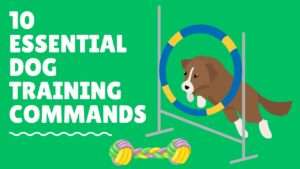







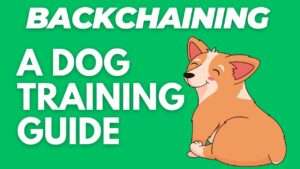

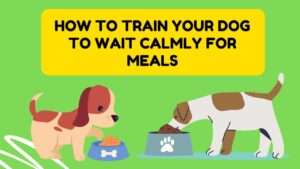
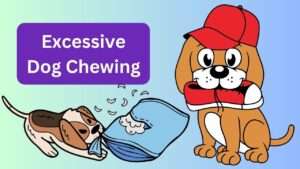


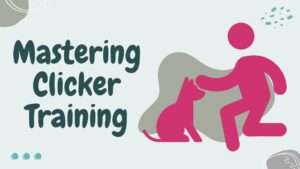
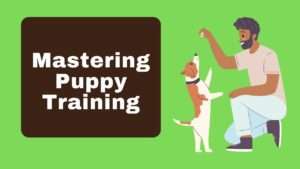








+ There are no comments
Add yours